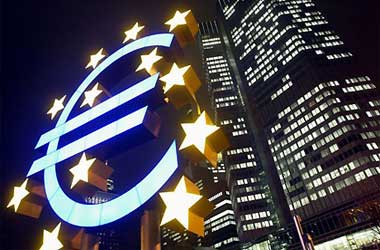 The euro declined against the greenback to 1.1315 Friday following the report of solid US existing home sales data for January. The weak Eurozone consumer confidence data also enabled the greenback to gain ground against the euro. However, economists believe that the euro will benefit from the Fed and the ECB policy differences.
The euro declined against the greenback to 1.1315 Friday following the report of solid US existing home sales data for January. The weak Eurozone consumer confidence data also enabled the greenback to gain ground against the euro. However, economists believe that the euro will benefit from the Fed and the ECB policy differences.
On Friday, the Conference Board issued a report that surprisingly revealed a decrease in its assessment of main US economic indicators. Following a 0.7% increase in December, the Conference Board’s key economic indicator declined 0.3% in January. Economists were surprised by the drop, since they had anticipated the indicator to climb by 0.3%, opposed to the 0.8% gain previously reported.
A senior economic researcher at the Conference Board says that the U.S. LEI fell a little in January because of the Omicron wave, increasing prices, and problems with supply chains, which impact
negatively.
“Initial jobless claims, shoppers’ optimism and share price declines, and the standard working week in production all led to the decrease first since February 2021,” he said. The concurrent economic indicator increased by 0.4% in January after increasing by 0.2% in December, according to the study. After a 0.4% gain in the earlier month, the trailing economic indicator increased by 0.7% in January.
“Notwithstanding the month’s drop and a slowing of the LEI’s half-yearly growth rate, general strength across the key indicators nevertheless points to ongoing, if sluggish, economic expansion into the springtime,” Ozyildirim said.
“Nevertheless, labor bottlenecks, rising prices, and the possibility for additional COVID-19 variations offer short-term challenges to development,” he concluded. As per a survey issued on Friday by the National Association of Realtors, prevailing house sales in the United States surprisingly increased in January.
Existing home sales increased 6.7% to 6.50 million last month, according to the National Association of Realtors, after falling 3.80% to an amended pace of 6.09 million units in December. Economists had predicted a 1.30% drop in existing house sales to 6.10 million units from 6.18 million units in the previous month, which startled them. With the surprise increase, existing house sales touched their highest yearly pace since January 2021, when they exceeded 6.65 million.
“Buyers were probably expecting additional rate hikes and clinching deals at the low interest rates, while investors contributed to total needs with all-cash bids,” said Lawrence Yun, chief economist at the National Association of Realtors. “As a result, house prices continue to rise steadily.”
According to the National Association of Realtors, the average existing-home price for all property types remained at $350,300 in January, a decrease of 1.20% from $354,600 in December, but an increase of 15.40% from $303,600 in the prior year. At the end of January, the inventory of homes for sale was 860,000, down from the previous month’s total of 880,000 and down by 16.5 percent from January 2021’s 1.03 million units.
In December, there were 1.7 months of unsold inventories, compared to 1.6 months in January and 1.9 months last year. “The inventory of available houses continues to be appallingly low, and is presently at a historical low,” Yun added.
EUR/USD has profited from the European Central Bank’s (ECB) announcement in February that it is possible for its policies to undergo a major change, and this might lead to more gains in the Euro to Dollar exchange rate. From the initial days of 2021, Europe’s common currency had dropped rapidly versus its American counterpart, but the downturn was halted this month when market started booking profits on Dollar trades followed by hints of a landmark shift in the ECB’s policy position.
Analysts and economists are upgrading their projections in expectation that the European Central Bank would start to raise its interest rates in the final quarter of 2022 or in the first few months of the following year, with many saying that it will mark the end of the period of negative benchmark rates in Europe.
Euro downturn and sizable withdrawals from European fixed income marketplaces were exacerbated by the arrival of negative rates eight years before, exceeding what may be described by developments in rate differentials and crude prices.
“Leaving negative interest rates may assist in avoiding ongoing fixed income outflows and boost the euro,” believes Zach Pandl, co-head of Goldman Sachs’ international currency strategy. Consequently, we are increasing our EUR/USD year-end projections for the following three years to 1.20 (up from 1.15); 1.25 (up from 1.20); and 1.30 (up from 1.25). According to these projections, the EUR/USD will recover to “fair value” by the final quarter of 2024.
As sovereign spreads expand and the Federal Reserve raises interest rates quicker, “euro appreciation may be stifled in the short term,” Pandl and his colleagues warned in a recent research briefing. To begin raising interest rates, the European Central Bank would first have to cease both of its quantitative easing initiatives and determine what to do with the trillions of Eurozone government bonds that the ECB has accumulated since 2015.
The ECB’s monetary policy normalization might look quite different from that of the Federal Reserve, the Bank of England, and several other central banks, but this is not necessarily a bad thing for the Euro-Dollar and other European exchange rates.
It seems that the ECB’s General Council is moving closer to ending the APP program sooner than predicted. A rate rise is still expected in the fourth quarter and CIBC Capital Markets FX strategy director Jeremy Stretch is searching for chances to go long the euro.
Every economy, currency, and central bank is unique in its own way, but this is certainly the case of the ECB, which oversees a monetary union spanning 19 nations while each one of the underpinning economies is run independently from the respective country’s capitals. However, there are considerable disparities between the member economies within the same union, some of which might represent a distinct and major task to the ECB as it strives to alter Eurozone monetary policy for a period where low inflationary pressure is no more a given.
“At some juncture, credit spreads cease to be a rate differential element and begin to have consequences for soundness.” We anticipate FX speculators to exploit widening credit spreads as a bearish impetus for the EUR after that milestone is breached. In light of this fact, Stephen Gallo, European director of FX strategy at BMO Capital Markets, thinks the ECB’s QE departure speed from March will be critical for currency and credit markets.”
The diversity in national public debt is by far the most prominent of the financial variations, which, if not factored by the ECB, might preclude an unified implementation or propagation of the bank’s monetary stance to all of the eurozone’s economies.
Although currencies often gain when central banks suggest that benchmark interest rates are going to increase, the risk for the Eurodollar is that when the ECB does that, markets may start expecting excessively high and uncomfortable rates from certain Eurozone states.
This is among the consequences of the Eurozone debt issue, and if goes unchecked, it might prevent the European common currency from benefiting from the ECB’s forthcoming monetary policy normalization, while this can be a danger that can be mitigated by existing ECB policies.
“This might be a severe problem. While financially troubled Euro countries like Italy may be concerned, we do not believe this is a danger that will arise any time soon. The ECB, similar to several other central banks, has absorbed practically the entire rise in public borrowing since 2015,” explains Holger Schmieding, Berenberg’s senior economist.
“We anticipate the European Central Bank to keep its promise to reinvest the profits of maturing bonds until the last leg of 2024,” a source said. In the latest study, Schmieding noted, “If the ECB decided to decrease its balance sheet, it might do that by giving less favorable terms for its planned long-term refunding operations.”
When the European Central Bank indicated in December that it will keep reinvesting the earnings it gets from nation states each occasion a bond kept on its balance sheet approaches maturity, it might offer lawmakers with a beneficial and Euro-supportive tool for insulating Euro zone economies against “financial disintegration.”
As such, it may isolate the ECB from central banks such as the Fed, BoE, Bank of Canada and many others, who have either previously declared plans to exit domestic debt markets or are now in the course of developing them, but it wouldn’t definitely be a drawback for the Euro if it allowed benchmark rates to increase from record lows without causing worries regarding the viability of less economically secure areas of Europe.




